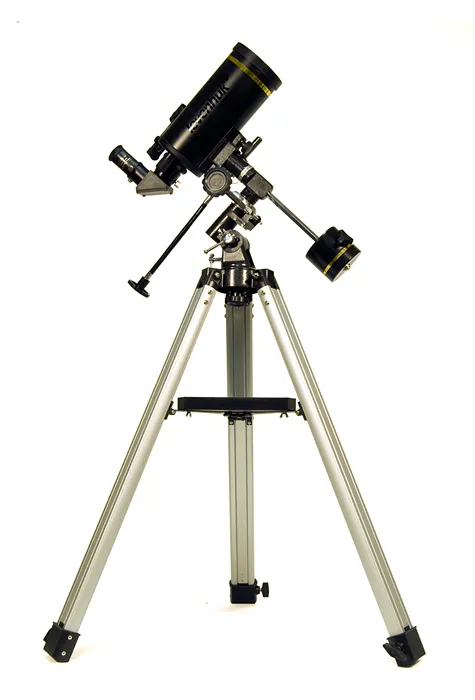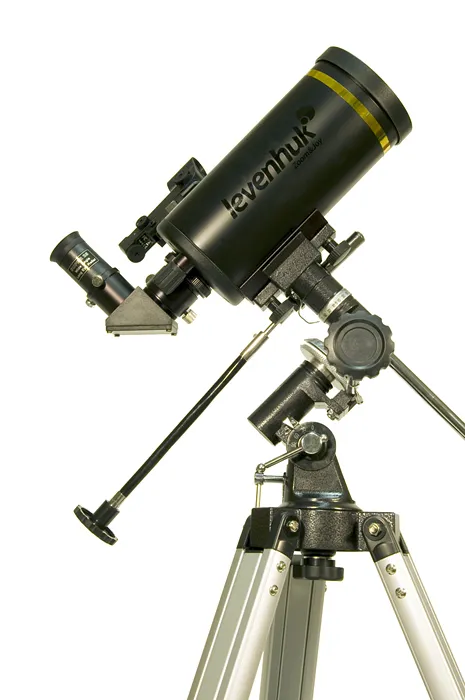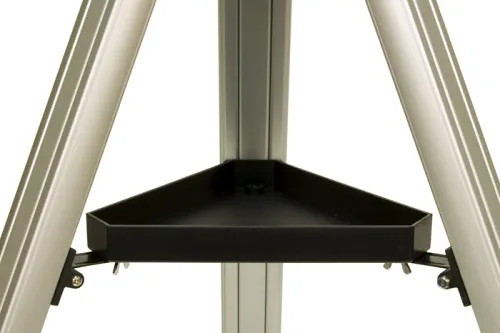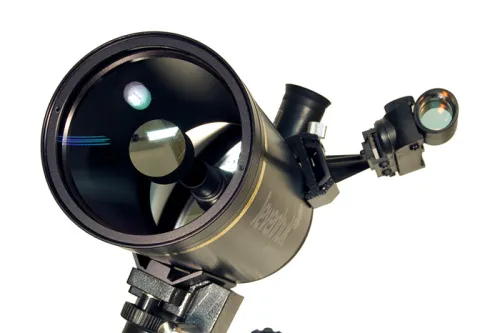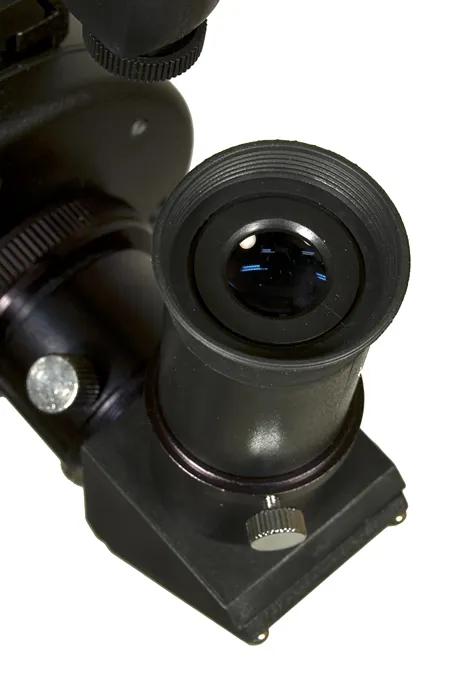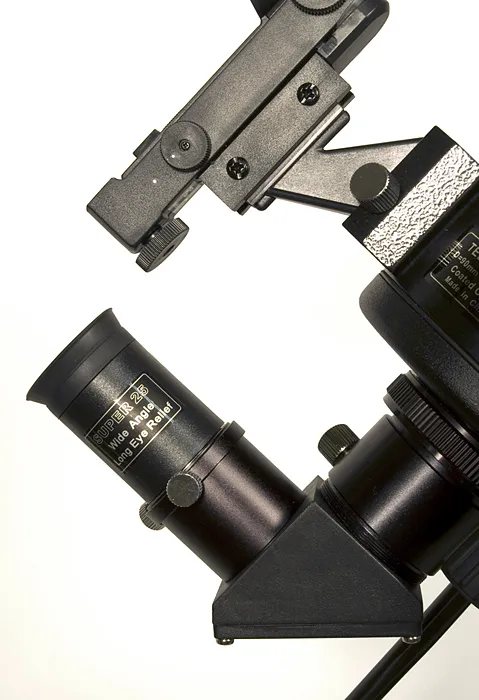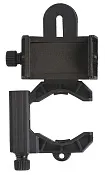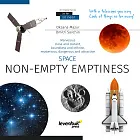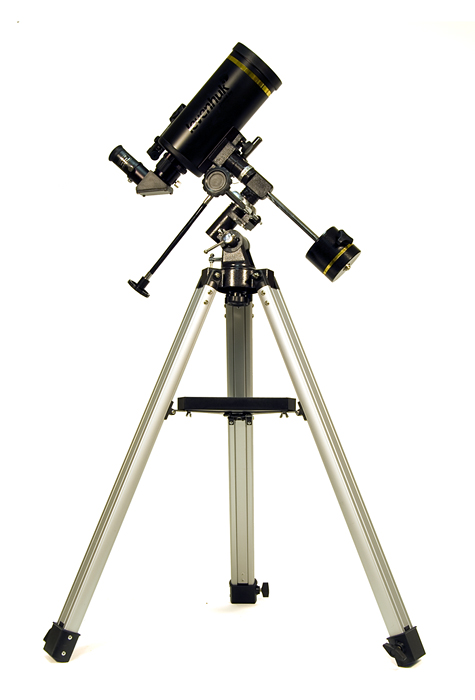Levenhuk Skyline PRO 90 MAK Telescope
Maksutov-Cassegrain telescope. Objective lens diameter: 90mm. Focal length: 1250mm
| Product ID | 27646 |
| Brand | Levenhuk, Inc., USA |
| Warranty | lifetime |
| EAN | 5905555002149 |
| Package size (LxWxH) | 83x39x24 cm |
| Shipping Weight | 9.8 kg |
Levenhuk Skyline PRO 90 MAK is a catadioptric telescope of Maksutov-Cassegrain optical design. This design allows for a long focal distance – 1250 millimeters (49.2 inches) – to be encased in a tube only 25 centimeters (9.8 inches) long, which means that you can easily go stargazing in the countryside. The 90-millimeter (3.5-inch) aperture and long focal distance make this telescope perfect for high-powered planetary observations, and provide views of high quality. At medium power you can observe various deep-sky objects, such as nebulae and star clusters. This model is for those who do not want to worry about carrying cumbersome equipment to the countryside for observations, but still want to have a powerful tool for their observations. Besides, this telescope may be easily mounted on a regular tripod and – with an addition of an erecting prism – may become a powerful spotting scope for terrestrial observations.
The lenses and mirrors are fully multi-coated, which allows for maximum light-gathering and increases their service life. The sturdy and lightweight aluminum tube is set up on an equatorial mount with slow-motion controls. You can also install the equatorial computerized drive system (purchased separately) on your mount. It is equipped with setting circles which – after a quick adjustment – allow for locating objects by their celestial coordinates and tracking them with just a turn of an equatorial control. The adjustable height tripod has a practical accessory tray where you can store all your tools. The red dot finder scope allows you to quickly navigate to the desired location. The kit includes 10-millimeter (0.4-inch) and 25-millimeter (0.98-inch) eyepieces with 52-degree field of view of 125x and 50x magnification, respectively. The lenses are made of glass and are fully multi-coated. Focusing your telescope is as easy as adjusting the primary mirror with a move of the smooth-turning knob. This model accepts 31.75-millimeter (1.25-inch) eyepieces; so you can use eyepieces purchased separately – not just those supplied with the kit – therefore increasing the magnification to the highest practical power of 180x. The focuser has the standard T-thread, which allows you to attach an SLR camera using an adapter and use your telescope for astrophotography.
Levenhuk Skyline PRO series was designed for advanced and demanding astronomers and includes a range of different models. The one thing in common is maximum precision and reliability during observations and astrophotography, high-quality materials and optics.
The kit includes:
- Telescope optical tube (optical elements inside)
- Red Dot finder scope
- Diagonal mirror
- 10mm eyepiece, 1.25"
- 25mm eyepiece, 1.25"
- Equatorial mount
- Tripod
- User manual and lifetime warranty
| Product ID | 27646 |
| Brand | Levenhuk, Inc., USA |
| Warranty | lifetime |
| EAN | 5905555002149 |
| Package size (LxWxH) | 83x39x24 cm |
| Shipping Weight | 9.8 kg |
| Optical design | catadioptric |
| Optical scheme | Maksutov-Cassegrain |
| Optics material | optical glass |
| Optics coating | standard |
| Primary mirror diameter (aperture), mm | 90 |
| Focal length, mm | 1250 |
| Highest practical power, x | 180 |
| Aperture ratio | f/13.9 |
| Resolution threshold, arcseconds | 1.5 |
| Limiting stellar magnitude | 11.7 |
| Eyepieces | SUPER 10 mm (125x), SUPER 25mm (50x) |
| Eyepiece barrel diameter, in | 1.25 |
| Finderscope | red dot |
| Focuser | 1.25" |
| Tripod | aluminum |
| Tripod height (adjustable), mm | 710–1230 |
| Accessory tray | ✓ |
| Telescope control | manual |
| Mount | equatorial, EQ1 |
| Power supply | CR2032 type battery – 1 pc. (not included) |
| User level | experienced users |
| Assembly and installation difficulty level | complicated |
| Observed object | deep-sky objects, planets of the Solar System |
Convenient diagrams that describe how to install additional accessories on refractors and catadioptric telescopes
Quick overview of all Levenhuk Skyline and Skyline PRO telescopes: telescopes' comparison and recommended use
Find out how to assemble a telescope on an example of the Levenhuk Skyline 90x900 EQ telescope
This short guide will help you avoid typical mistakes and learn more about telescope and mounting types
The basics of astronomical observations for beginners
In this article we have gathered answers to some of the most frequently asked questions about telescopes
The most interesting celestial objects you can observe with Levenhuk telescopes
How telescopes work?
You can actually perform observations from your balcony!
All about telescope sizes, types, magnification, and mounts
Learn how to set up and use the telescope properly
Astronomy in light-polluted skies. Find out what you can observe in the city
Read an interesting comprehensive article on telescopes for little astronomers
The pictures are made with Levenhuk telescopes
Celestial objects you can observe with telescopes of different apertures
Colored and vivid images of galaxies, planets and star clusters entrance everyone who is fascinated by boundless space
Find an interesting review on the history of the changes to a refracting telescope
To make the process of choosing a telescope easier, we will tell you about the characteristics of the most popular types of telescopes today
Learn everything you need to know about refractor telescopes to make the right choice
You will need the T-ring with a M42x0,75 T-thread. It can be bought in your local camera store.
Is there any additional information you might need?
Please do not hesitate to contact us if you need any further assistance.
Currently we do not have the drive system in our product range. You need to buy the equatorial computerized drive system for German equatorial EQ1 mount. Is there any additional information you might need?
Yes, you can install the equatorial computerized drive system (purchased separately) on your mount.
Is there any additional information you might need?
Looking forward to your reply.
Is there any additional information you might need?
Is there any additional information you might need? Looking forward to your reply.
*Binary stars with the separation between their components of 1.5" and more
*Faint stars up to 12 stellar magnitude
*The phases of Mercury
*Lunar craters with a diameter of 3 miles
*Polar caps and seas on Mars during opposition
*Atmospheric flows of Jupiter and the Great Red Spot. The shadows of Jupiter's moons on its disc
*The Cassini Gap in the rings of Saturn and 4 to 5 of its moons
*Uranus and Neptune as small discs without details in them
*Dozens of globular clusters, bright globular cluster will fall to stardust at the edges
*Dozens of planetary and diffuse nebulae and every object from the Messier catalogue
*The brightest objects of the NGC catalogue
*Most of the galaxies appear as hazy spots without details

